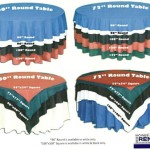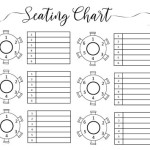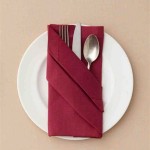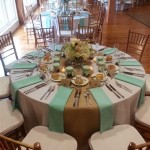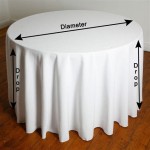Traditional Seating Plan For Wedding Top Table
The wedding top table, a cornerstone of traditional wedding receptions, plays a significant role in setting the tone for the celebration. Its composition and seating arrangement are not arbitrary; rather, they reflect a deliberate effort to honor key family members and individuals who have significantly contributed to the couple's lives. Adhering to a traditional seating plan for the top table ensures respect for these honored guests and facilitates a smooth, celebratory atmosphere. The careful consideration of protocol and etiquette surrounding the top table is paramount for a successful and harmonious wedding day.
The traditional seating arrangement is rooted in specific customs and expectations, dictated primarily by family relationships and the roles of individuals within the wedding party. Understanding these customs is crucial for couples seeking to create a formal and respectful ambiance. Deviations from the traditional layout should be carefully considered and communicated to family members in advance to avoid misunderstandings or hurt feelings. While modern weddings often see variations on this theme, comprehending the foundation of the traditional approach is essential for making informed decisions about seating arrangements.
The Core Components of a Traditional Top Table
The principal function of the top table is to seat the wedding couple, their parents, and the best man and maid of honor (or chief bridesmaid). The specific order within this group is dictated by established etiquette. Typically, the bride and groom occupy the central positions, symbolizing their union and the joining of their families. Flanking the bride and groom are their respective parents. The best man and maid of honor are positioned at the ends of the table, providing support to the couple and fulfilling their designated roles throughout the reception.
The placement of parents is strategically chosen. The mother of the bride is traditionally seated to the groom's right, and the father of the groom is seated to the bride's left. This arrangement symbolizes the joining of the two families and encourages interaction between them. The father of the bride sits next to the mother of the bride, while the mother of the groom sits next to the father of the groom. This arrangement continues the pattern of pairing parents from opposing sides where possible.
The best man and maid of honor, often close friends or siblings of the bride and groom, play critical roles in the wedding. Their placement at the ends of the table allows them to easily assist the couple with any needs that may arise during the reception. Furthermore, they are often responsible for delivering speeches and toasts, making their proximity to the couple and the microphone advantageous. While other bridesmaids and groomsmen may be present at the reception, they are not typically included at the top table in a traditional arrangement.
Navigating Complex Family Dynamics
One of the most challenging aspects of creating a traditional top table seating plan is navigating potentially complex family dynamics. Divorced parents, remarriages, and strained relationships can all present significant challenges. The key is to prioritize the comfort of the wedding couple while also showing respect to all involved parties. Open communication and thoughtful consideration are essential for minimizing potential conflict.
When dealing with divorced parents, a common approach is to seat each parent separately with other family members or close friends. It is generally not advisable to seat divorced parents next to each other unless they maintain a positive relationship. The decision of whether to include stepparents at the top table is a delicate one. If the stepparent has played a significant role in the bride's or groom's life, including them may be appropriate. However, it is crucial to consult with the biological parents and ensure they are comfortable with this arrangement. In some cases, separate tables dedicated to each side of the family may be a more suitable solution.
In situations where there are strained relationships between family members, careful consideration must be given to seating arrangements. Separating individuals who are known to have conflicts is a prudent approach. Consulting with family members in advance to understand their preferences and concerns can help to avoid awkward or uncomfortable situations on the wedding day. The primary goal should be to create a harmonious and enjoyable atmosphere for everyone in attendance.
If one or both of the parents are deceased, honoring their memory at the wedding reception is a thoughtful gesture. This can be achieved through a variety of means, such as including a photograph of the deceased parent at the top table or dedicating a moment of silence during the speeches. The empty chair can be filled with a significant relative or a close friend who stepped in as a parental role.
Variations and Alternatives to the Traditional Top Table
Although the traditional top table seating plan remains a popular choice, many couples are opting for variations or alternative arrangements that better reflect their personal preferences and the unique circumstances of their wedding. These variations often involve incorporating elements of modern wedding trends while still maintaining a degree of formality and respect for tradition.
One common variation is the "sweetheart table," which consists of only the bride and groom. This arrangement allows the couple to have some private time together during the reception and can be particularly appealing for couples who prefer to be the center of attention. This option allows the parents and wedding party to mingle with other guests and provides more personal conversations where they are free to move table to table.
Another alternative is to have a "family table," which includes the bride and groom, their parents, and siblings. This arrangement can be particularly suitable for smaller weddings or for couples who have close relationships with their siblings. This option keeps the core family grouping intact and allows for intimacy and shared celebration.
For larger weddings, some couples choose to have a long, rectangular table that accommodates the entire wedding party, including bridesmaids, groomsmen, and their partners. This arrangement promotes a sense of inclusivity and camaraderie, while still maintaining a designated space for the wedding party. This helps include people in the main event, but can be difficult to manage when a large wedding party is involved.
In some cases, couples may opt to forgo a traditional top table altogether and instead choose to sit with their guests at a regular table. This approach can foster a more relaxed and informal atmosphere, encouraging interaction and mingling among all attendees. This also provides an opportunity to sit with guests that have traveled a long way to attend or who might not otherwise get access to time with the married couple.
Regardless of the chosen seating arrangement, it is essential to communicate the plan clearly to all involved parties well in advance of the wedding day. This will help to avoid confusion and ensure that everyone feels comfortable and respected. A detailed seating chart, displayed prominently at the reception entrance, can further assist guests in finding their assigned seats.
Ultimately, the decision of whether to adhere to a traditional top table seating plan or opt for a variation or alternative should be based on the couple's personal preferences, family dynamics, and the overall style and tone of their wedding. By carefully considering these factors and communicating effectively with family members and other key individuals, couples can create a seating arrangement that is both meaningful and harmonious.

Arranging Your Wedding Seating Plan And Top Table

The Wedding Top Table Layout

Wedding Top Table Seating Arrangements Aby Joanne Photography

Wedding Top Table Diffe Arrangements

Wedding Top Table Seating Arrangements Aby Joanne Photography

Wedding Etiquette Who Sits At The Bridal Table

A Wedding Table Plan Fit For King And Queen

Wedding Top Table Seating Arrangements My Scotland

Wedding Top Table Seating Arrangements Aby Joanne Photography

Wedding Top Table Layout Guide The Brewery
Related Posts

